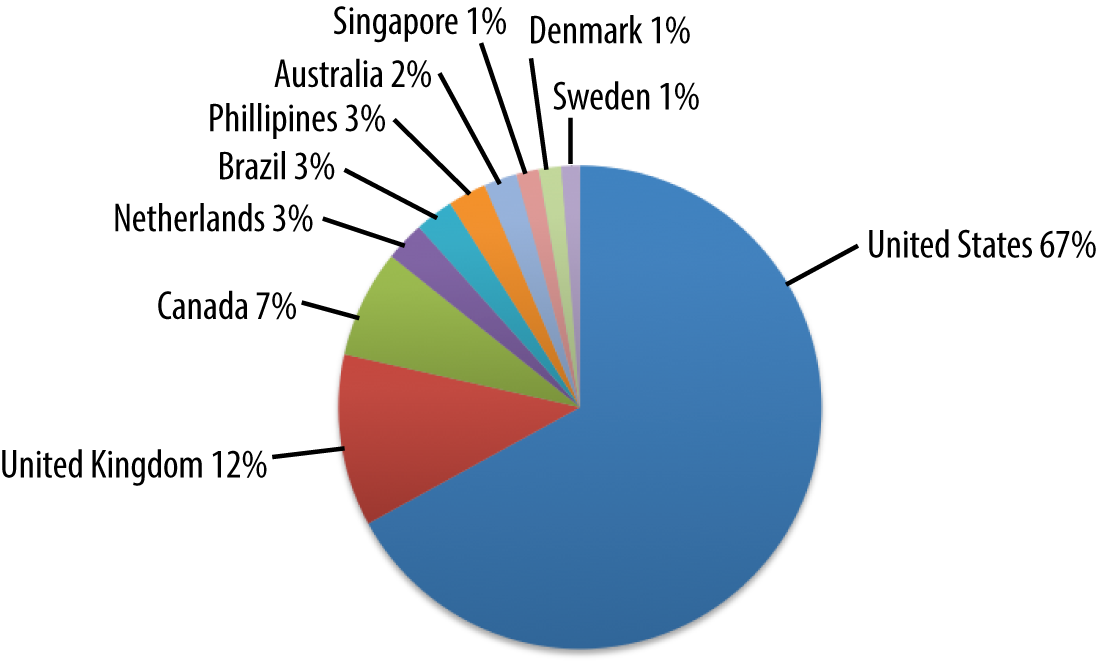Chapter 7. Quantities of RUM Measurements: How to Handle the Load
One of the big problems with RUM on the Internet is that it can get big. Real big. It is safe to say that RUM on the Internet has been one of the biggest drivers of so-called “big data” initiatives. From Google Analytics to credit checks in real time using banking data, RUM data on the Internet generates a lot of measurements that require new innovations to handle them. To understand some of these issues, let’s get more intimate with one of the five sites we perused earlier.
RUM Scales Very Quickly; Be Ready to Scale with It
Let’s take one of the more modest sites as an example to illustrate some of the issues. Our gaming site generates around two million measurements a day. The geographical breakdown is 67 percent of the traffic from the United States, 12 percent from the United Kingdom, and the rest from all over. As a reminder, Figure 7-1 shows the breakdown:

Figure 7-1. Demographic breakdown of gaming site visits
Clearly it makes sense to have beacon catchers in the United States (for instance) to catch the majority of measurements (whatever they are measuring—it does not really matter). We will use this dataset in our hypothetical infrastructure construction, so keep it in mind.
In the previous chapter, we mentioned that we would talk about the last four steps of RUM that Alistair Croll and Sean Power introduced ...
Get Real User Measurements now with the O’Reilly learning platform.
O’Reilly members experience books, live events, courses curated by job role, and more from O’Reilly and nearly 200 top publishers.

